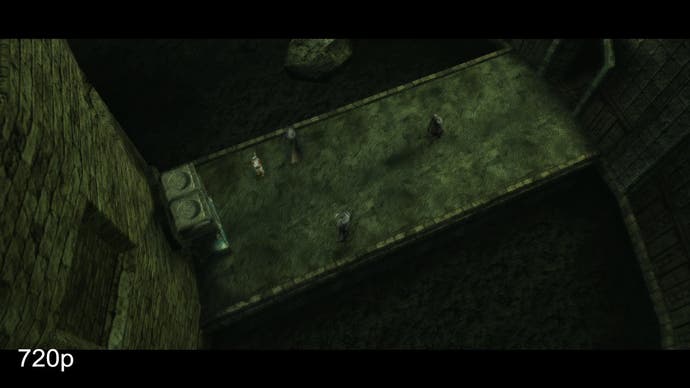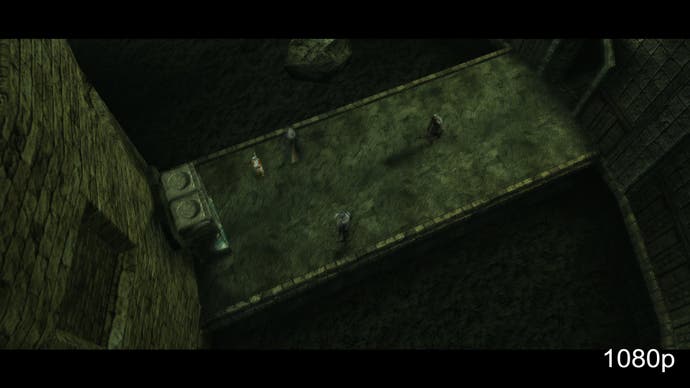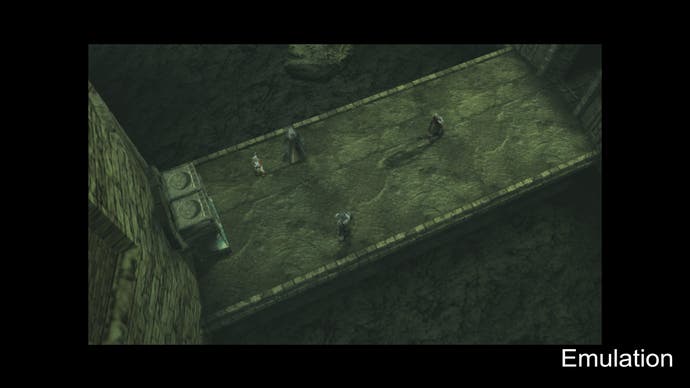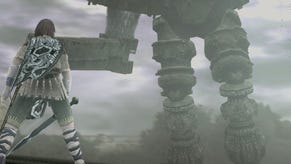Tech Analysis: Ico and Shadow of the Colossus Collection HD
PS2 vs. PS3 vs. 3D vs. emulation vs. anything else we can find.
As development of Sony Japan's The Last Guardian enters its final stretch, the platform holder has finally released its high-definition PlayStation 3 remakes of the new game's predecessors: the epic Ico and Shadow of the Colossus.
To ensure a quality product, Sony handed off the conversion work to Bluepoint Games - the development studio that handled the original, really rather superb God of War Collection, who in turn worked closely with the original developers to ensure an authentic recreation of the games.
It's safe to say that this is the most eagerly anticipated high-definition remaster since Bluepoint's debut outing, so we were especially curious to see how the conversion would be handled. Could the original games scale up to high-definition resolutions and still retain their magic?
Let's kick off by taking a look at the HD remastering of the game that started it all: Ico. Initially planned for the original PS1 console, its protracted development period eventually saw it appear on CD for PlayStation 2 some four years after producer Fumito Ueda first devised the concept.
While elements such as lighting, detail and animation were clearly ahead of their time, there are some hints of the game's less technologically advanced origins. Base resolution for Ico is a rather low 512x224 (going up to 512x256 in PAL mode, with a frame-rate reduction to 25FPS), with the title actually forcing the PlayStation 2 hardware to forego a traditional interlaced video output in favour of low-resolution progressive scan.
The low resolution of the original release means that an HD remaster presents both challenges and opportunities. In scaling up to either 720p or 1080p, the chance to "unlock" the full detail of the original artwork is mouth-watering (as we tried to showcase in last year's Ico/Shadow of the Colossus HD emulation piece), but at the same time the danger remains that there just isn't the quality in the original assets to present a viable high-definition experience - exactly the issue we had with the first two games in the recent Splinter Cell remakes.
So, how has Ico turned out? Here's an initial comparison of the extended introduction sequence, with the PS2 version compared with the new HD "remix". Owing to the relative simplicity of the visuals, h.264 video compression is that much more effective, so while most of our comparison videos need to be slowed down we can run this one at full-speed with original audio. (If you're not keen on our full-screen switching edit, a continuous A to B comparison is also available.)
The immediate impression you get from the HD version of Ico is that Bluepoint has done a good job in making the visuals shine in high definition. The low-resolution "fog" has lifted, allowing the full detail of Team Ico's original art to be PROPERLY appreciated. There's also a "full pixel" mode that liberates the PS3 version from the borders of the original game, giving the game much more real estate on-screen - boosted all the more by the move from the original's 4:3 aspect ratio to the full 16:9 widescreen experience.
Ico also runs at three different resolutions, depending on how the PlayStation 3's XMB is set. Go for the default standard 720p and you get the expected 1280x720 framebuffer, with MLAA implementation - a good choice for a game like Ico. With Display Settings at 1080p, Ico delights with a native full HD framebuffer, again with MLAA applied - making it the first full 1920x1080 title we've seen to be running the computationally expensive post-process, providing a wonderfully crisp, eye-pleasing image. Switch over to stereoscopic 3D, and we have full 720p resolution per eye - again with MLAA engaged.
The situation is somewhat different with Shadow of the Colossus. The original PlayStation 2 game, released in 2005, pushed the hardware to the limit (resulting in the wildly uneven performance level) and it appears that this did cause Bluepoint some difficulties.
Despite official word from Sony that both HD remasters support "full 1080p HD resolution for a stunning, razor-sharp presentation", Shadow of the Colossus appears to have some issues with fill-rate, resulting in the game supporting native 720p and an upscaled 1080p that sees a base 960x1080 resolution upscaled horizontally, resulting in obviously rectangular pixels.
This gives a 12.5 per cent resolution advantage to the "1080p mode", but the fat pixels may be more distracting to the eye than letting your display simply upscale the normal 720p output.
Again, MLAA is supported on all modes - fine for 720p and 3D - but not so good on the scaled 1080p mode. As pixels are being expanded horizontally by 100 per cent, the sub-pixel crawling issues we sometimes see with MLAA are amplified somewhat. The standard 720p output is our choice for the best balance of picture quality and performance, and is the basis for this comparison movie (also available in a straightforward A to B head-to-head format).
As you can see from the comparison video, native 720p proves to be a phenomenal improvement over the original and frame-rate is very, very solid. While the resolution boost isn't quite as revelatory as it is in Ico (like for like, PS2 Colossus is pumping out twice as many pixels as PS2 Ico), it's remarkable just how much detail is resolved from the shift to high-definition.
The question is, to what extent have these games been retooled to "work" within the much larger amount of visual real estate available on PlayStation 3? After all, with Ico, that original 512x224 framebuffer accounts for less than six per cent of the available resolution available at 1080p.
Different approaches have been taken with both games. Bluepoint could have redrawn textures to produce the remastered versions, increasing detail but perhaps compromising the vision of the original developers. Instead, for Ico at least, the way forward appears to have been to repeat the original textures, giving a much busier look to the game but without the need to use anything other than the core artwork.
There are occasions in the comparison movie where it appears that the PS3 is operating with much higher-resolution textures, so we undertook an experiment to determine whether new art had been generated or whether the detail increase was simply unlocking the potential of what was already there.




Going back to the open-source PCSX2 emulator, we ran Ico at an unimaginably high resolution with FXAA applied, and compared screenshots with the original PS2 title and the PS3 game running at both 720p and 1080p. In some sections where we thought we were seeing completely new artwork, we see pretty much exactly the same result that we get on PS3 - the resolution increase serving to "unlock" the latent detail in the original artwork.
However, there did appear to be sections where more detail, different detail, was being resolved indicating that in some places, brand new assets appear to have been introduced.








